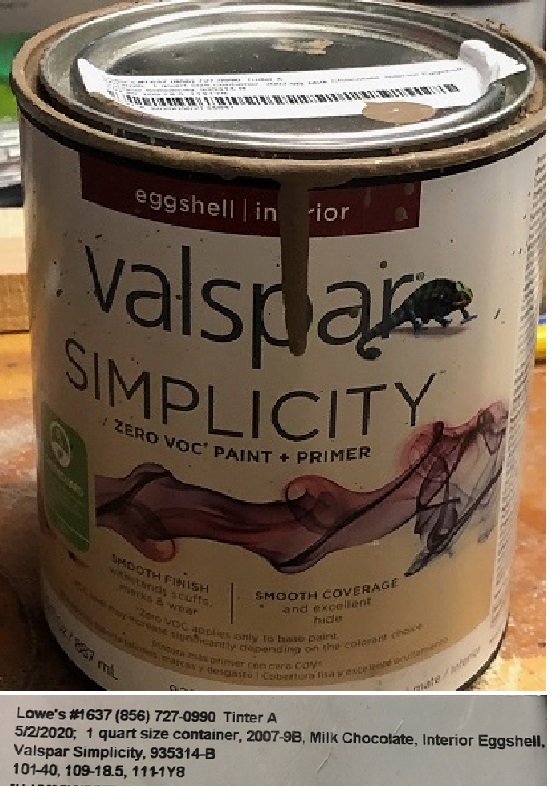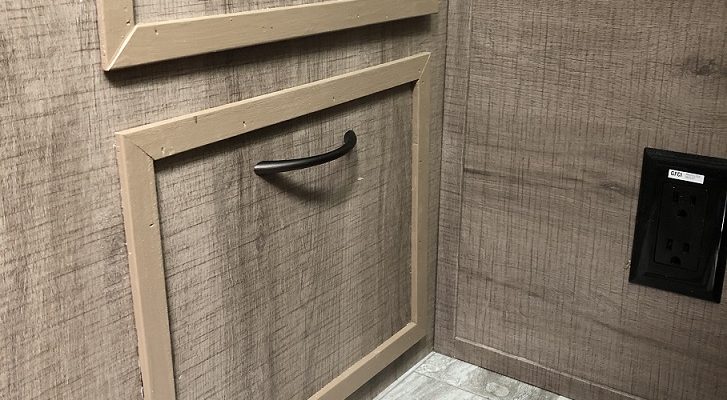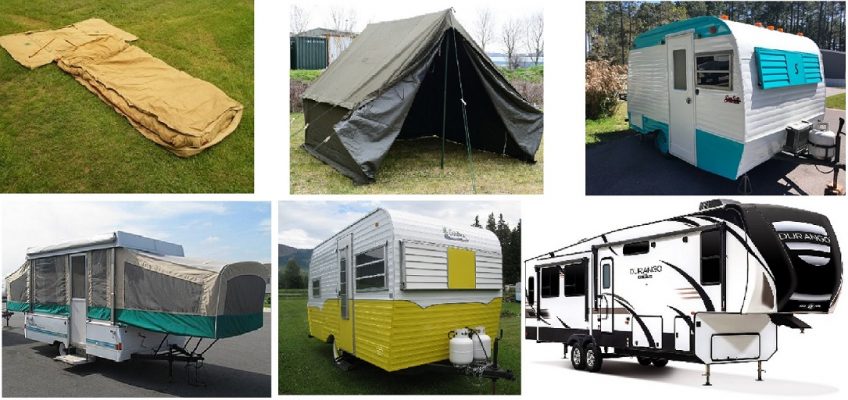Hack #5 Under Bed Storage – Side Drawers.
I am converting the under bed storage area into more accessible storage units. This post is for two drawers on each side of the forward area of the box. We decided to split it 1/3 and 2/3. All of my measurements are for our Imagine XLS 22MLE trailer but can be adjusted for anything.
* * * * * * * * * Important Notes * * * * * * * * *
Check the actual dimensions of you box and between the framing. It may not be the same as my unit, not symmetrical or not square. The width between framing varied over ½” between the two sides on mine. You may need to adjust your dimensions to compensate.
* * * * * * * * * * * * * * * * * * * * * * * * * * * * * * * * * * * * * * * *
This needs no new bracing. Glue all wood pieces together with a good wood glue like Elmer’s. The first step is to create the boxes. As in all of my drawers, I built them from ¼” plywood to keep the weight down.
The space between the existing frame members on each side is 12¼” by 17″. I ran out of the extra drawers slides I had in my shop and had to purchase some so I went with 14″ slides here. Each side of the drawer requires ½” of clearance for the slides.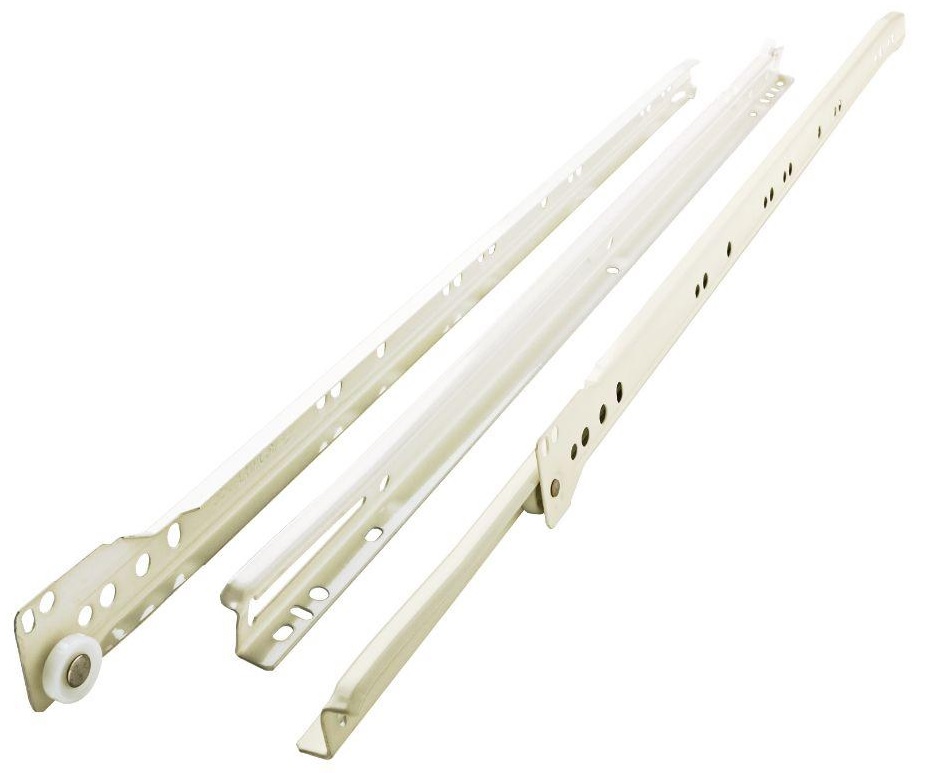
I made all four boxes 11¼” wide and 14″deep. The lower ones were 9½” tall and the upper ones 4½” tall.
I cut pine planking to ¾” by 3/8″ framing pieces for the drawer framing.
For each lower drawer, cut two sides to 9½” by 13¾”. For each upper drawer, cut two sides to 4½” by 13¾”.
For each lower drawer, cut one back to 9½” by 11¼”. For each upper drawer, cut one back to 4½” by 11¼”.
Cut 4 bottoms to 10¾” by 13¾”.
Add framing to all 4 side pieces. Cut the bottom pieces 13¾” long and the side pieces to 8-7/8″ tall for the lower drawers and 3-7/8″ tall for the upper drawers (to allow clearance for the bottom to slide in). Attach it laying vertical (flat) to allow you to nail the sides into them. Glue and nail these to the sides. Position the side pieces flush with the top of the drawer leaving the gap at the bottom.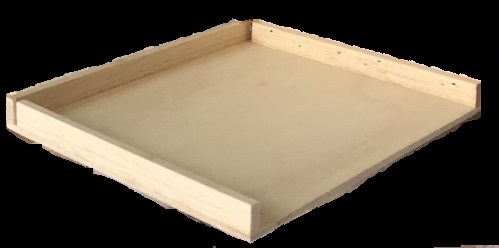
Measure the exact thickness of the two sides and the framing together. Cut 3 pieces of the framing to a length equal to 10¾” minus the thickness just measured. Glue and nail one to each back, centered side-to-side, to align with the side framing. 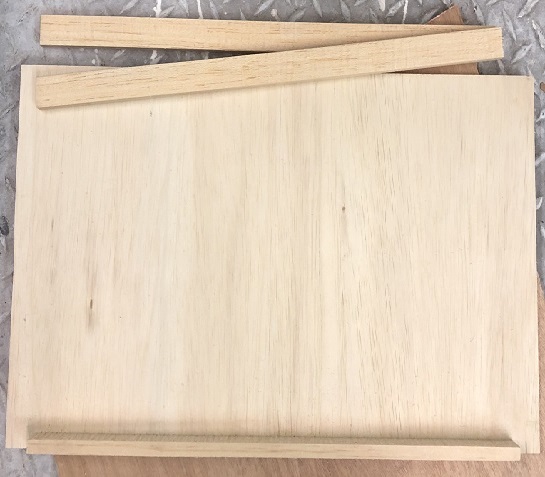
Glue and nail the side framing to the backs.
Glue and nail two framing pieces to the front – to frame it in – and positioned to align with the side framing.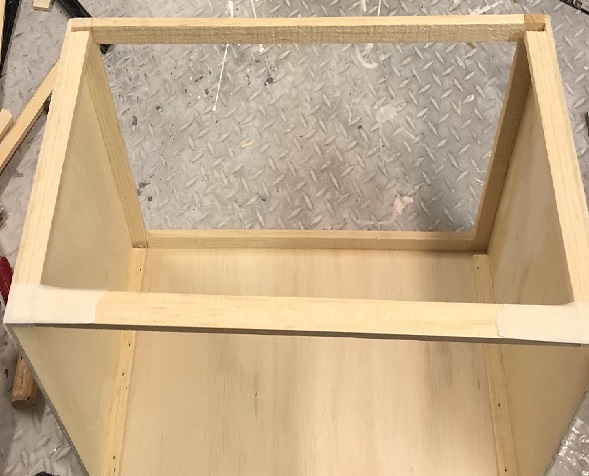
Slide the bottom into place and glue it in. You can use heavy items (such as full cans of paint) to hold it firmly in place while the glue dries.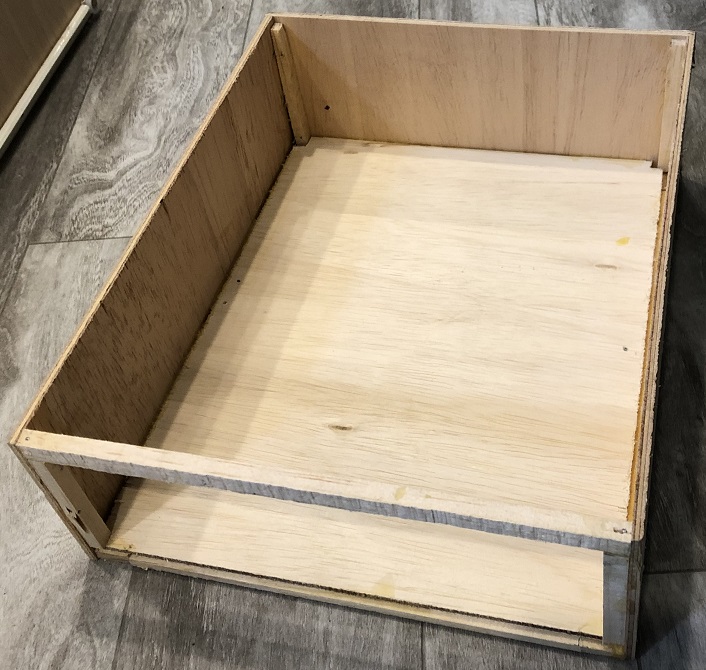
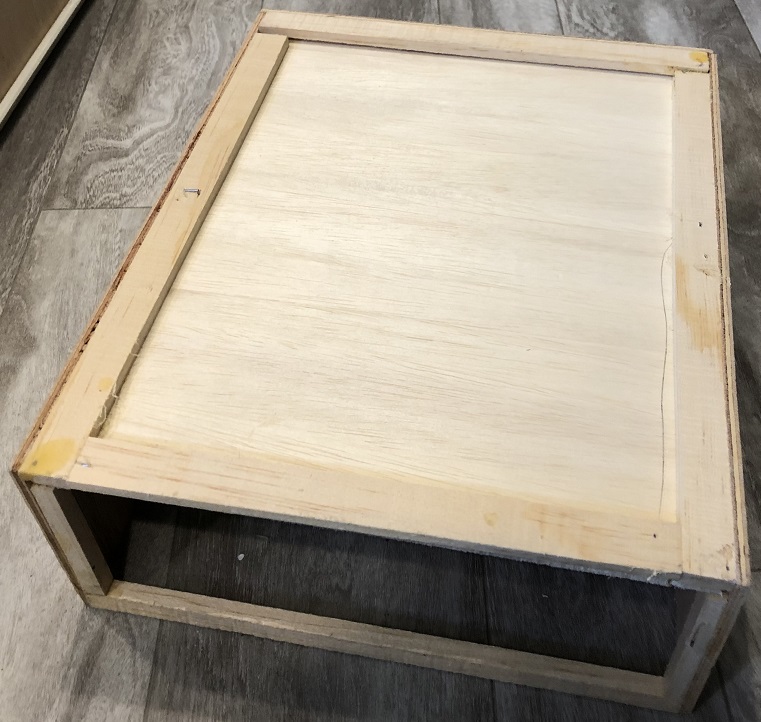
Once all the glue has had plenty of time to dry thoroughly, attach the rail sides to the drawer. I added the extra caution of gluing them on with Gorilla glue too.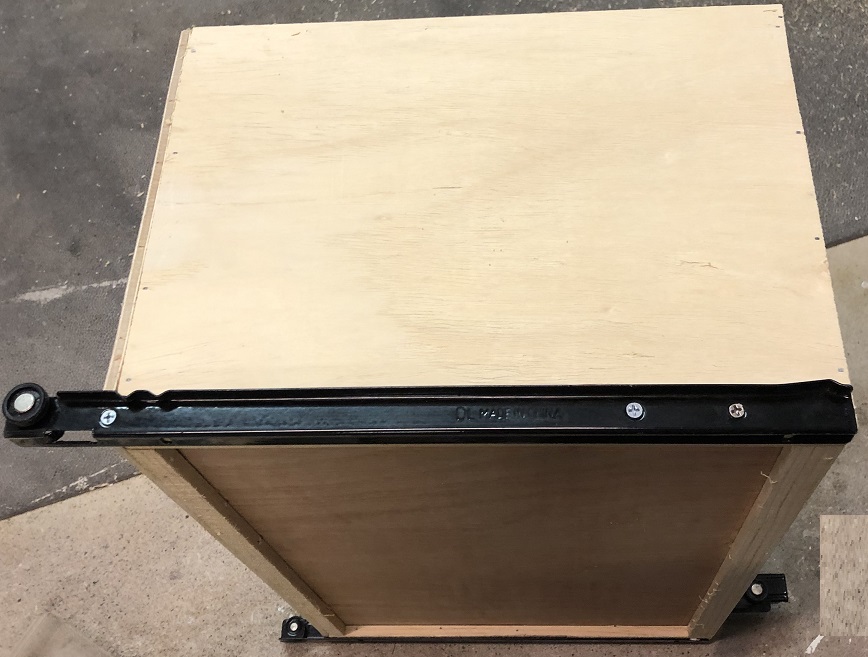
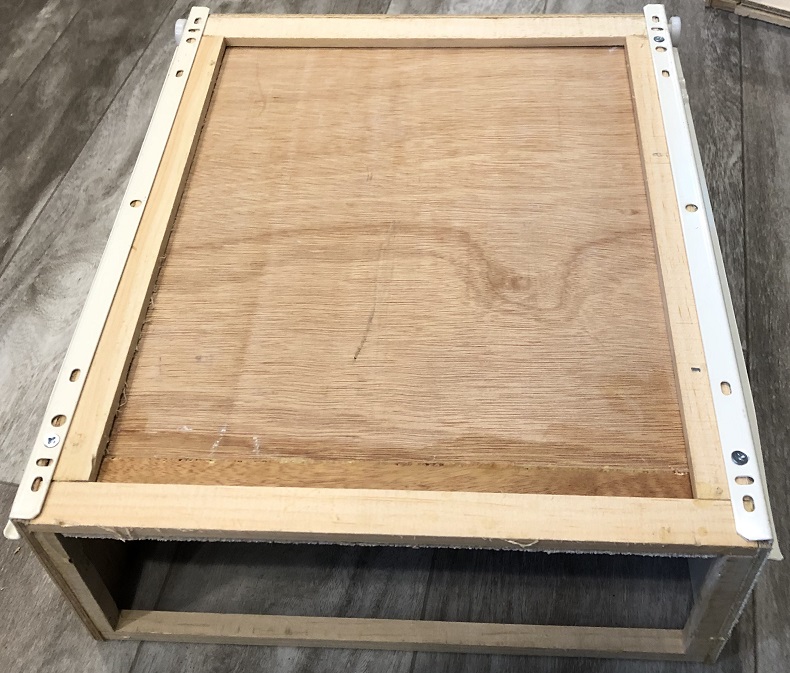
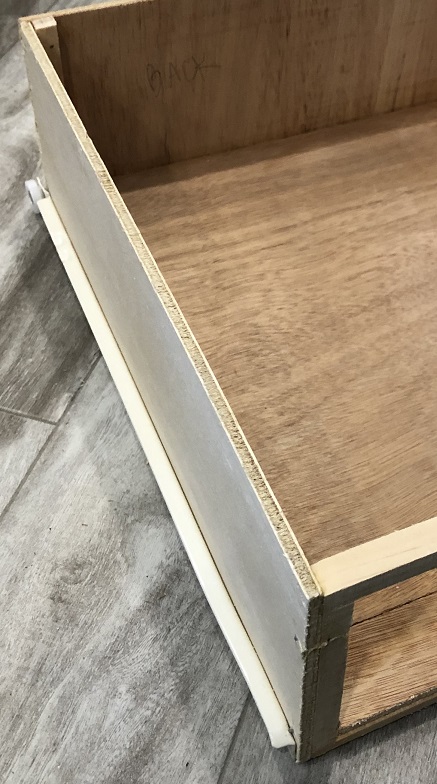
Now you will be cutting the openings. I used my Bosch Oscillating saw for this. You need to create a hole exactly at the inner edge of the box. I did this by laying the saw blade flat on the shelf, or framing, and slowly sawing a short cut on each side of the hole. Be sure to place a small piece of masking tape near the top of the piece to be cut out marked ‘TOP’ so you will be sure to keep the right orientation later.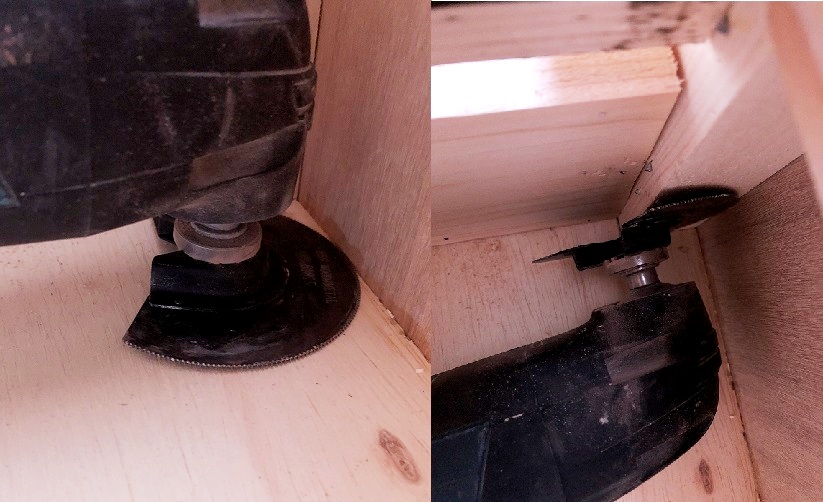
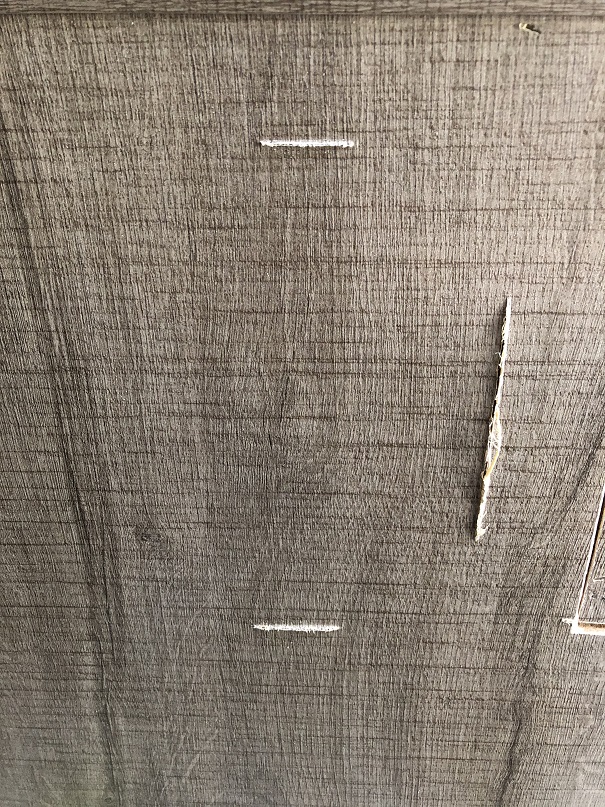
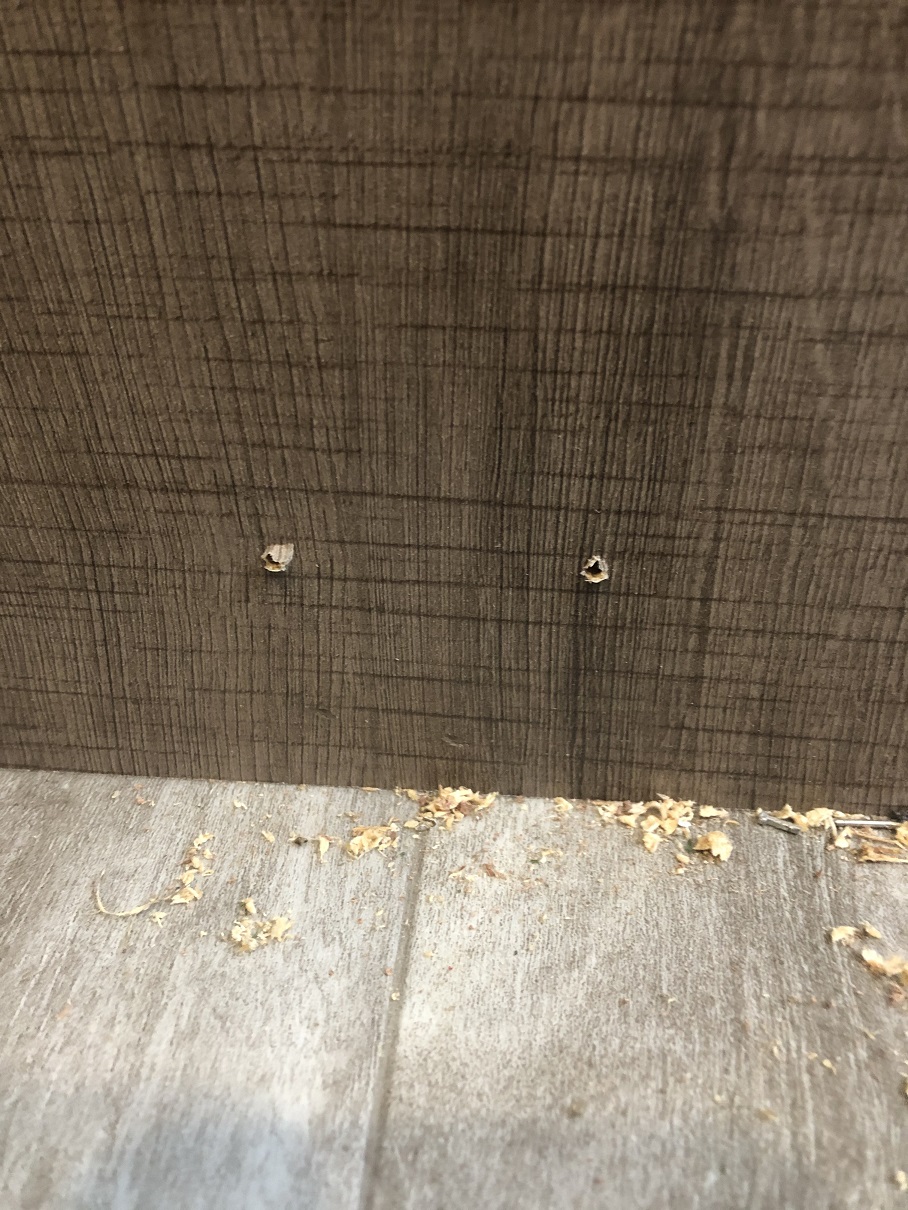
You could also drill a very small hole from the inside out to locate the edges.
Once you have these cuts, stretch masking tape along the cuts as a guide line for cutting. Be very careful when pulling the tape back off as it may try to lift the top layer off the paneling.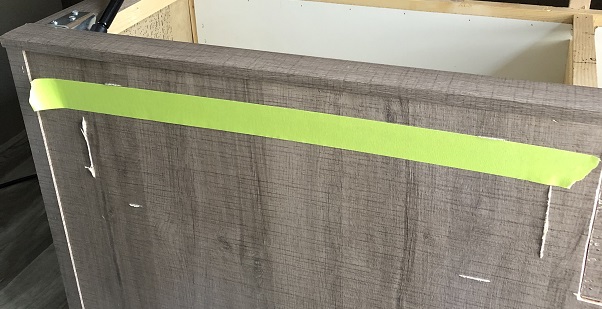

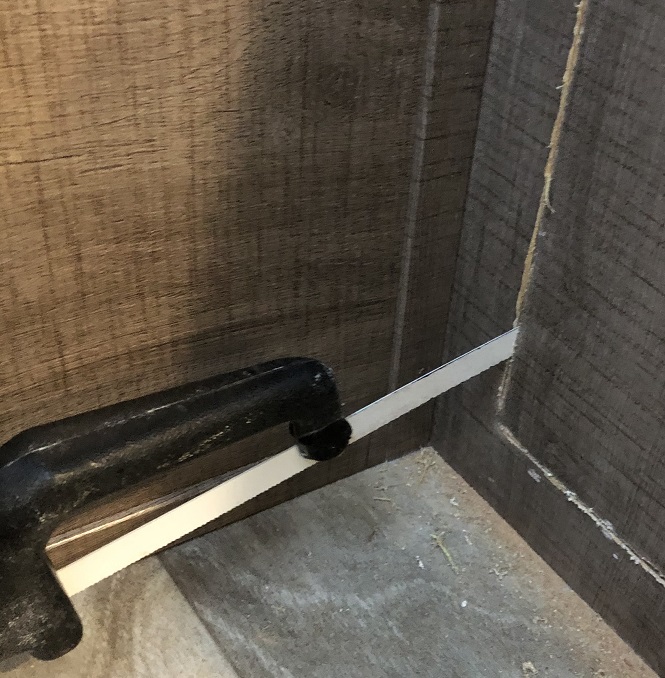
If you are cutting with a saber saw, you can place masking tape on the bottom to prevent scuffing the paneling. A small keyhole, or similar, saw works best for cutting out the corners.
Carefully cut out both openings. Use a rasp, file, or sandpaper to smooth up the cut edges. Set these aside for now. They will be used for the door faces. You will need to add support to the panel under the upper opening. Cut a piece of extra stock (¾” by ¾” is good) to fit snugly then glue and nail it in place flush with the bottom edge of the upper opening.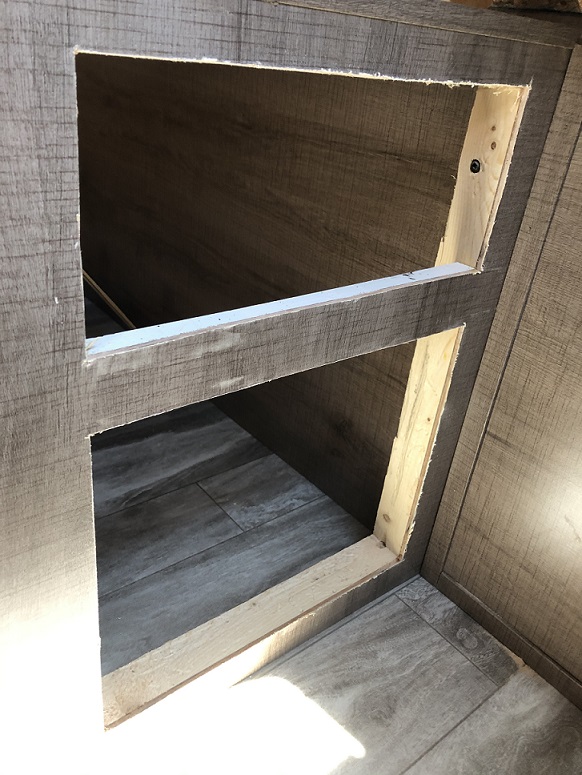
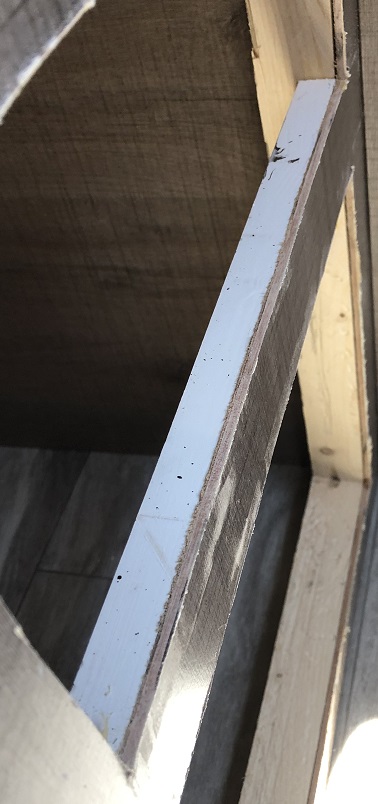
Cut two 16″ long framing pieces from 2×4 stock by ripping it to a 2×2. Masure the distance from the front of the rail to the rear screw hole and add ½”. Glue and secure one framing piece against the back of the box centered at the distance measured. Be sure your screw, or nail, extends less than ¾” into the floor or simply screw it onto the side frame. 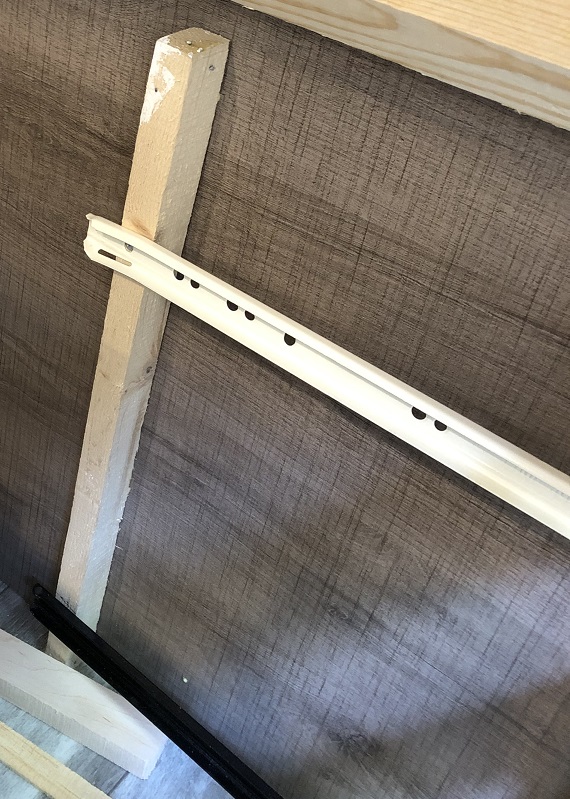

Position the other framing piece against the framing for the front boxes and check it with a square to be sure the rail will be true. You may need to notch the frame or add spacers (washers or wood strips). Glue and secure the other framing piece against the framing for the front boxes. If you have not added the front boxes, you will need a horizontal support between the 2 support pieces.
Install the rails for the lower drawer first. The front of the rails mount to the existing framing. Attach the front of the rail about ½” in from the front edge. Measure the height where the rail mounts in the front and attach the rear of the rail to the frame at the same height.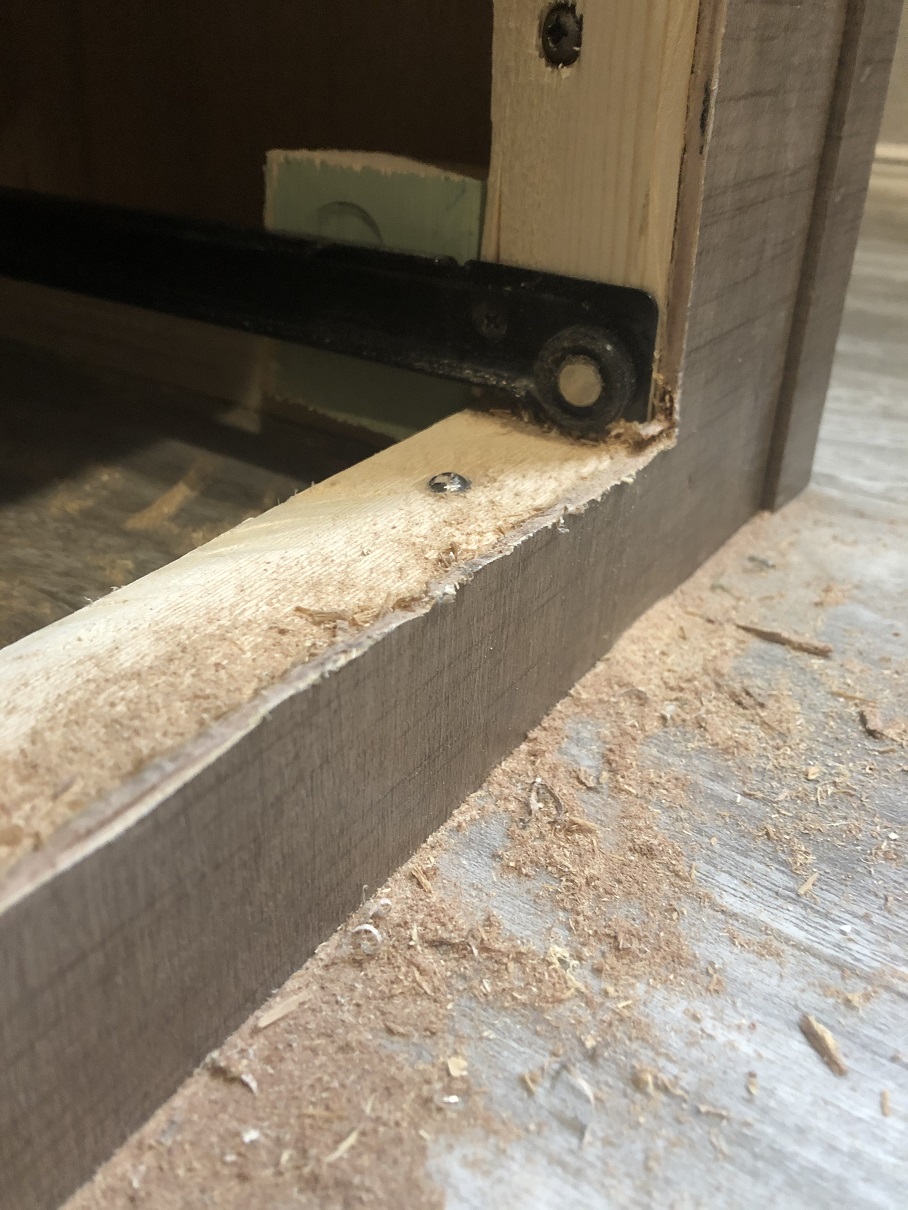

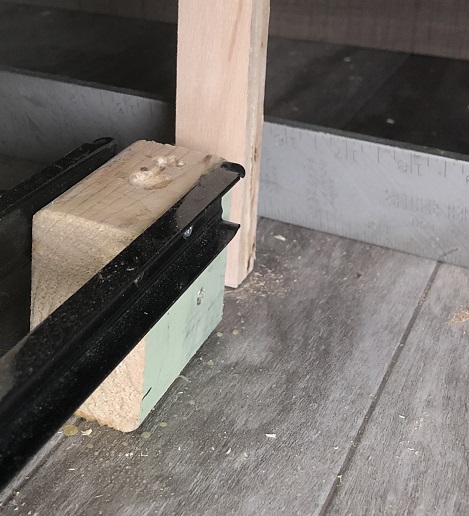
Attach the left rail in the same manner. Use a square to be sure the left rail is true and perpendicular to the front and shim it if needed.
You will use the pieces you cut out for the drawer fronts. If there is not enough clearance around the edges, trim the edges about 1/8″ or as needed.
Slide the draw into place then hold the cut out panel against the front. Use a pencil to reach over the top and mark where the framing fits against the panel.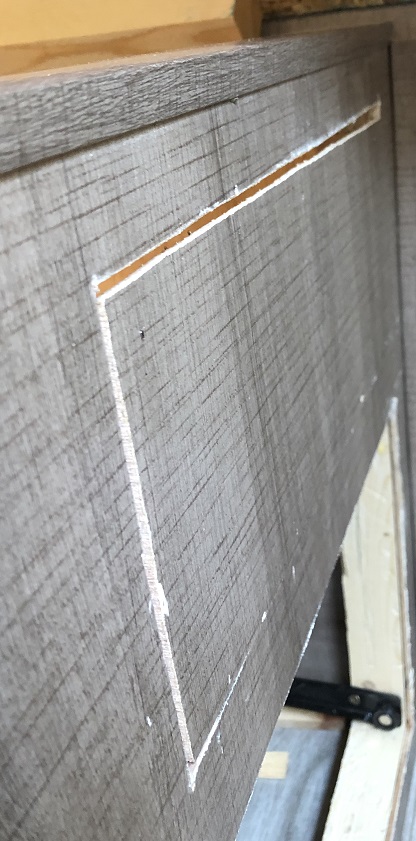
Tack the face on with a couple of small brads and place it back on the rails to make sure it is placed correctly. Adjust if needed. Glue and nail it to the framing.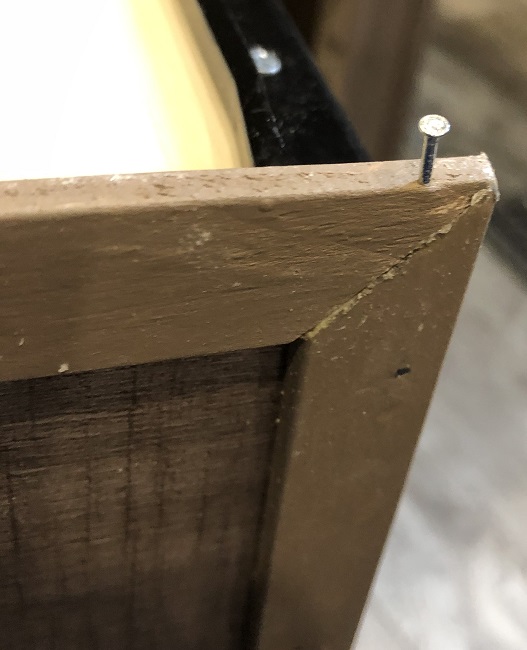
Add trim to the edges of the door to cover the cuts around it. I simply cut thin slices off ¾” stock and painted it for my trim. Be sure to use small brads on the edges to firmly secure them together.
Attach the pull handle to the front. You will most likely need wood blocks on the inside to provide enough thickness for the long bolts (plus this distributes the stress on the drawer. Locate the center of the door (side-to-side) and use a piece of masking tape to mark the spot.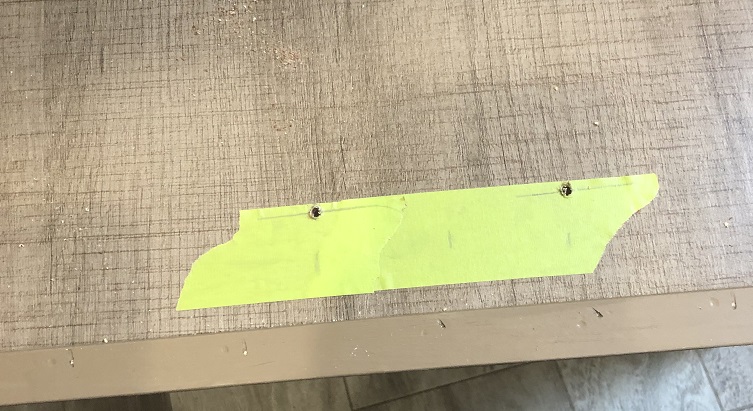

Drill the hole(s) for the handle and mount it. The drawer assembly is now complete.
Insert the drawers. If one binds from being too tight, you can adjust for this. Remove it, remove one rail, remove a very small thickness where it mounts to the drawer (about 1/32″) then reinstall the rail and try it again. A router works best but you can sand it or even use a chisel (with extreme agility and care). If it hangs on a screw head, make sure the screw is the proper one and has a flat head that recesses into the rail. As a last resort, file/grind the head flatter. If the drawer drops off the rail because they are spaced too far apart. add washers between the outer rails and the mounting positions.
Touch up any paint as needed and you are done. Enjoy the extra organization to this storage area.framing pieces
Trim paint : Valspar Milk chocolate